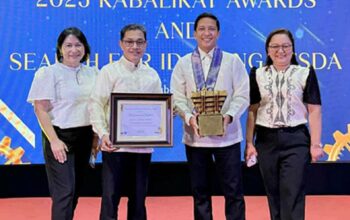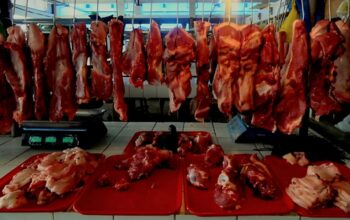
WORKING against a seemingly impossible timeline, the Philippine Drug Enforcement Agency (PDEA) in Bohol is desperately seeking the community’s support in drug clearing Bohol barangays, and honestly admitting that the drug problem needs a whole of nation approach to be solved.
Still at the 570 barangays cleared and only 17 barangays declared drug-free, PDEA Intelligence Agent Chona Egam, says there is still so much to go, and the time is slowly slipping.
With the need for an accelerated Barangay Drug Clearing Program, PDEA put up an integrated drug-clearing and stopping the proliferation of drugs by enlisting the local government units in its operations.
Speaking at the Kapihan sa PIA Friday, August 31, Egam detailed how a barangay can get cleared and eventually be declared drug-free: a process that could last a couple of months to over a year.
“It all depends on the community,” she stressed, “who will all work together to get their barangays off the list of slightly, moderately or seriously drug-affected.”
By these classifications, she said of the drug affected barangays, one is slightly affected if the barangay has at least one user.
It it’s moderately affected if it has at least one pusher, and it is seriously affected if it has the presence of a drug den, or a clandestine laboratory and naturally with users and pushers.
First among the steps towards drug clearing a barangay is for the local council to establish a functional Barangay Anti-Drug Abuse Council (BADAC) and its working committees.
This also entails the identification and consolidation of the BADAC list of persons who use drugs, pushers, drug den operators, coddlers, financiers and manufacturers.
Functionality of the BDCP can be seen in the house visits of PWDs and drug personalities to update them of the available documented interventions for surrenderers and monitor these persons as well as the program implementation.
They will also deliberate on the list which will then be submitted to the Philippine National Police, for consolidation and reconciliation.
In its sustainability stage in the barangays, the BDCP members would have been empowered in the consistent implementation of the program, adopting a self-policing system, resilient citizens and stigma-free drug victims reintegration.
Crucial to the stage is the setting up of programs in social reintegration of drug personalities, relapse program, drug-free workplaces, multi sectoral and community support to the BDCP, sustained demand-reduction activities and the institutionalization of the program with multi-sector, inter-agency support.
All these documented steps and processes would be submitted by the DBCP Point Person to the PDEA, who will initially check and validate this, before submission to the Regional Oversight Committee for eventual ‘drug cleared barangay’ declaration. A barangay the shows excellence in the DDCP gets a seal of excellence and ultimate the drug-free barangay declaration, Egam said. (rahc/PIA-7/Bohol)



